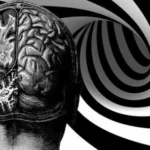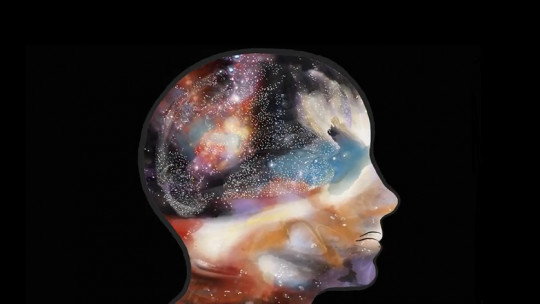the word megalomania It comes from the union of two Greek words: megaswhich means “big”, and mania whose meaning is “obsession”. Thus, megalomania is the obsession with greatness, at least if we pay attention to its etymology.
Megalomaniac people: what traits characterize them?
Now, who doesn’t know someone who, because they think so big, believes they are going to take on the world? It is quite common to find, from time to time, people especially proud of themselves, with a clearly optimistic view of their own abilities and who seem to believe they are capable of anything.
As a criticism, it may also happen that someone (or perhaps ourselves) labels these people with the adjective “megalomaniac”, especially if the person being talked about has some power to influence the life of the person. others, either because he is very popular or because he has a high position.
In these cases are we talking about megalomaniac people?
Clarifying the concept of megalomaniac
What exactly is megalomania? Is it a word used only to describe cases of mental disorder, or can this word be used to designate the conceited or vain people we encounter in our daily lives?
In a sense, the correct option is the second, and the fact that we use the word megalomania to describe all types of people is proof of this. In general terms, Megalomania is understood as a tendency to overestimate one’s own abilities. and the importance of the role played in the lives of others. Thus, a person who tends to be quite proud (perhaps, too proud) about his abilities and his decision-making power could be labeled with the term megalomaniac, albeit using the word somewhat lightly.
However, if we try to understand megalomania from the field of psychology, we will have to use this word in much better limited cases.
The origins: megalomania in psychoanalysis
Freud was already in charge of talking about megalomania as a personality trait linked to neuroticism, something that he himself was in charge of treating in the well-to-do patients who came to his office.
Beyond Freud’s psychoanalysis, other followers of the psychodynamic current have come to define megalomania as a defense mechanism carried out so that reality does not contradict the unconscious impulses that, theoretically, would lead us to behave trying to satisfy all our needs. immediately, as if we had unlimited power. Since, evidently, we do not have the omnipotence that that subconscious part of our psyche would like to have, these psychodynamicists said, we distort reality so that it seems that we do have it: and hence megalomania, which would help us avoid suffering continuous frustration.
However, the dominant clinical psychology today is going down a path that has nothing to do with the psychodynamic current founded with Freud, and the notion of megalomania has also changed.
Symptoms and signs of this disorder
The term megalomania appears in the most recent edition of the Diagnostic and Statistical Manual of Mental Disorders (DSM-V) and is included in the description of Narcissistic Personality Disorder, but it does not have its own section and therefore cannot be considered in itself a mental disorder, but in any case part of the symptomatology.
Thus, megalomania can play a role in a diagnostic picture, although mental health professionals currently prefer to use more precise terminology to talk about Narcissistic Personality Disorder.
Specifically, to know if megalomania is part of a disorder, special attention is paid to whether the person presents delusional ideas or does not present them.
Megalomania and delusional ideas
Delusional ideas are those that are based on clearly inadequate logic. which only makes sense to the person who holds these beliefs, when one is unable to learn through experience the uselessness of these ideas, and when acting according to these ideas is problematic or inappropriate.
Thus, for megalomania to be part of a clinical picture, it must present itself in these types of thoughts that falsify reality, taking its toll on the person in question and/or their environment. Megalomania is equated with delusions of grandeur.
A person who has been diagnosed among other things because of their tendencies towards megalomania will tend to believe that they have more power than a person would have in their situation and the fact that maintaining these beliefs will lead to failure and seriously harm you will not change your mind. The delusional ideation will remain there even after having lost fights against several people at the same time, for example, or after having been rejected by many people for having presented yourself in a very presumptuous way.
Additionally, since megalomania is related to narcissistic personality disorder, you will most likely tend to worry about the image you give.
All this, of course, if we understand by megalomania what is included in the DSM-V.
What are megalomaniacal people like?
People who present a behavioral pattern clearly associated with megalomania can be of many types, but they evidently present some common characteristics.
Megalomania is a concept with chiaroscuro
Megalomania is a somewhat ambiguous concept… like almost all concepts we work with in psychology. Megalomania, in itself, can be applied to many cases, more extreme or more frequent, and it is not necessary to have a mental disorder to be worthy of the name. However, in The DSM-V uses the concept of megalomania to designate extreme cases in which delusions of grandeur occur. that isolate the individual and make him or her hold a very distorted view of things.
Many times, in the clinical and forensic context, those in charge of diagnosing people have to know how to recognize cases in which the tendency towards megalomania is part of the symptomatology of a mental disorder… which is not easy. That is, they have to distinguish between what is popularly known as “boldness” and pathological megalomania.
How do they do it? Well, part of the secret is years of experience, of course. If it were possible to diagnose cases of disorders that are expressed through megalomania, there would be no need for professionals to deal with it. On the other hand, diagnostic manuals include a series of criteria that serve to quantify more or less objectively the degree to which megalomania approaches delusions of grandeur and narcissistic personality disorder.
A final thought
From the perspective of psychology, using the popular definition of the concept “megalomania” entails an obvious danger: on the one hand, trivialize with a series of symptoms that occur in clinical conditions and worsen people’s quality of life who experience it, and on the other, build a false social alarm around a non-existent epidemic. There are people who simply have self-esteem and optimism much higher than average, and there is nothing wrong with that.









